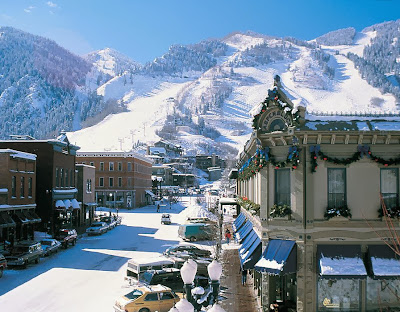The Rocky Mountains are characterized by the awe inspiring and majestic beauty that has been the muse for songs, poets, and any American that has taken in the landscape. The Rockies affect the weather and climatic patterns of the region, the flow of water, population booms and busts, and the meeting of multiple agendas such as that of farmers, archers, environmentalists, and politicians that are often discordant.
The beautiful Rocky Mountains (www.austinlehman.com)
(www.bestourism.com)
History's Effects on Demography & Settlement
Native Americans did not inhabit the region in great amounts. Instead, the region was used for hunting and trading of beaver pelts between Euro-Americans and Native Americans in the seventeenth century. Euro Americans. Britain's Hudson Bay Company infiltrated the region during the nineteenth century and practiced fur trapping. They succeeded for a large amount of time in keeping Americans from the spoils and very lucrative resources of the region. French Canadian American trappers then explored the region and founded American fur trapping companies. Trappers discovered interesting and unique geographical characteristics of the region including: holes, rivers, and springs. Many towns experienced booms and busts.
Climate & Geography
There is a huge disparity in temperatures between the Rocky Mountains and the Great Plains of around 35 degrees. This can be attributed to the steep increases in elevation. In the low ranges of the Rocky Mountains, there are desertlike plants and animals, while in the highest elevations there is tundra forest. In the summer, the climate is warm and dry, and in the winter, it is wet and cold. The winters bring much precipitation, and due to it, snow to the region. Unlike it, San Francisco, hardly ever experiences snow, and the levels of precipitation are much lower. Though San Francisco also has vast mountain ranges, its mountains are much lower on average, and do not account for as much tourism as the Rocky Mountain's which attract tourists seeking snow-related recreational activities.
Economy & Sustainability Implications
The Rocky Mountains have a long history of mining that has left the area with abandoned mines, chemicals that pollute the watersheds, displaced habitats, ravaged natural land, and damaged ecosystems. Since the Mining Law of 1872 legalized mining of the area by private companies, few limits were placed, and the resources were exploited. Tourism is a huge contributor to the economy of the Rocky Mountains, due to the scenic beauty of the area, and the availability of snow for skiing, and other snow related activities. Though the region has prospered greatly due to tourism, it is necessary that the social and environmental implications caused by the industry be taken into account. Like in San Francisco, similar environmentally conscious efforts have been made by Vail and Aspen. However, the competition between Vail and Aspen is due to which town is the most greenest, while San Francisco has initiated efforts that are not only green but conducive to long-term sustainable change.
Skiers in Aspen, Colorado (www.cntraveler.com)
Ski Resort (www.invillas.com)




No comments:
Post a Comment